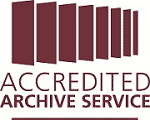House history - sources
Here you will find a selection of some of the most useful sources we hold for house history. This is not an exhaustive list but is a good place to start your research.
Original documents
It is always useful to bring a photograph or sketch of your house with you when you visit our search room, where you can access the documentary sources. Having established which parish your house is in, you will need to consult original documents. For information on how to find and use these please ask the searchroom staff. These may include:
Maps and plans
- Ordnance Survey, (19th-20th century), both 6”, 25” and 50″ scale
- inclosure maps/plans, (18th-19th century)
- estate and other maps, (17th-20th century)
- deposited plans relating to public/private schemes (19th-20th century)
- Building regulation plans for towns are often available from the 1880s onwards and for some rural areas for this century.
- Tithe maps and schedules: Based on an area of a parish these maps and schedules are very useful in providing details of owners and occupiers for every property and piece of land in the parish. They date from the late 1830s to the 1850s. They do not survive for every parish. Visit our Tithe Apportionments database to find out more.
Deeds
Their survival is very patchy; most have come from local solicitors and landowners. You should bear in mind, however, that identification of a bundle of deeds with an actual property may be difficult before house names and numbers became common. Try consulting the property card index or our online catalogue Warwickshire’s Past Unlocked.
Census returns
Although they are full of information it can be difficult to be sure that you have identified your property correctly. They should be used in conjunction with other evidence. They are taken every ten years and are currently available for 1841 – 1901. Coverage is fairly complete.
Tax records
Land tax assessments (18th-20th century) and Hearth tax returns (late 17th century).
Registers of Electors
This is particularly useful for 20th-century buildings. We hold registers for Warwickshire for 1832-1986.
Surveys and valuations
These are not common or comprehensive in their cover. Some date from the 16th century. You can use the general card index by looking up a place name or referring to Warwickshire’s Past Unlocked.
Sale particulars
These come from estate agents and again are not comprehensive. They date mainly from the mid-nineteenth century. Some have inventories of house contents and room descriptions. These are listed in the property card index.
Rate books
There is nearly a complete set for 1910 relating to the Public Finance Act (see CR 1978) but survival for other periods is patchy. Depending on the place concerned some of the holdings that we have date back to the mid 19th century. They provide details of an exact address, owner and occupier for each property especially useful in urban areas.
Probate inventories
These are lists of contents of houses, often room by room, which usually accompany the wills of the occupants, (late 16th to mid-18th century). However, we are not a probate registry, so we do not have the main wills series.
Manorial records
Particularly useful for very old houses, medieval and Tudor, but can be relevant into the 19th century for a small number of places. They are largely a record of people rather than buildings but may give useful clues.
Printed sources
While you are waiting for documents to be brought you may like to consult some of our printed sources which are available for reference on the library shelves in the public searchroom (these resources are self-service):
- The Buildings of Warwickshire by Niklaus Pevsner CRO Ref: WAR/PEVS. – Good architectural glossary at the back
- Victoria County History of Warwickshire
- Listed buildings list
- Books and pamphlets on your village or locality (Ask staff)
- Trade and Post Office directories.
Specialised buildings
You may be particularly interested in the following types of documents if your house was previously a specialised building that has since been converted into a house. Indexes you may find particularly useful are the General Index, the Schools Index and the Property Index.
School
- Parish Records (if a Church School)
- County Council records
Parsonage
- Parish records
- Glebe terriers
- Churchwardens’ accounts and presentments
Non-conformist meeting house or manse
- Quarter Sessions Ref: QS 10
Public house
- Quarter Sessions Alehouse Registers and Recognizance’s Ref: QS 36 & QS 37
- late 19th century onwards Petty Sessions licensing registers
- directories
Large estate
If your house belonged to a large estate the relevant estate or family records may provide information. Ask for the Estate Maps Guide.
Parish charity
If it belonged to a parish charity the relevant parish records or charity trustees’ records may have been deposited and be available.

Warwickshire County Records Office
Opening hours: Wednesday to Friday 9am to 4pm, Saturday 9am to 12 noon.





